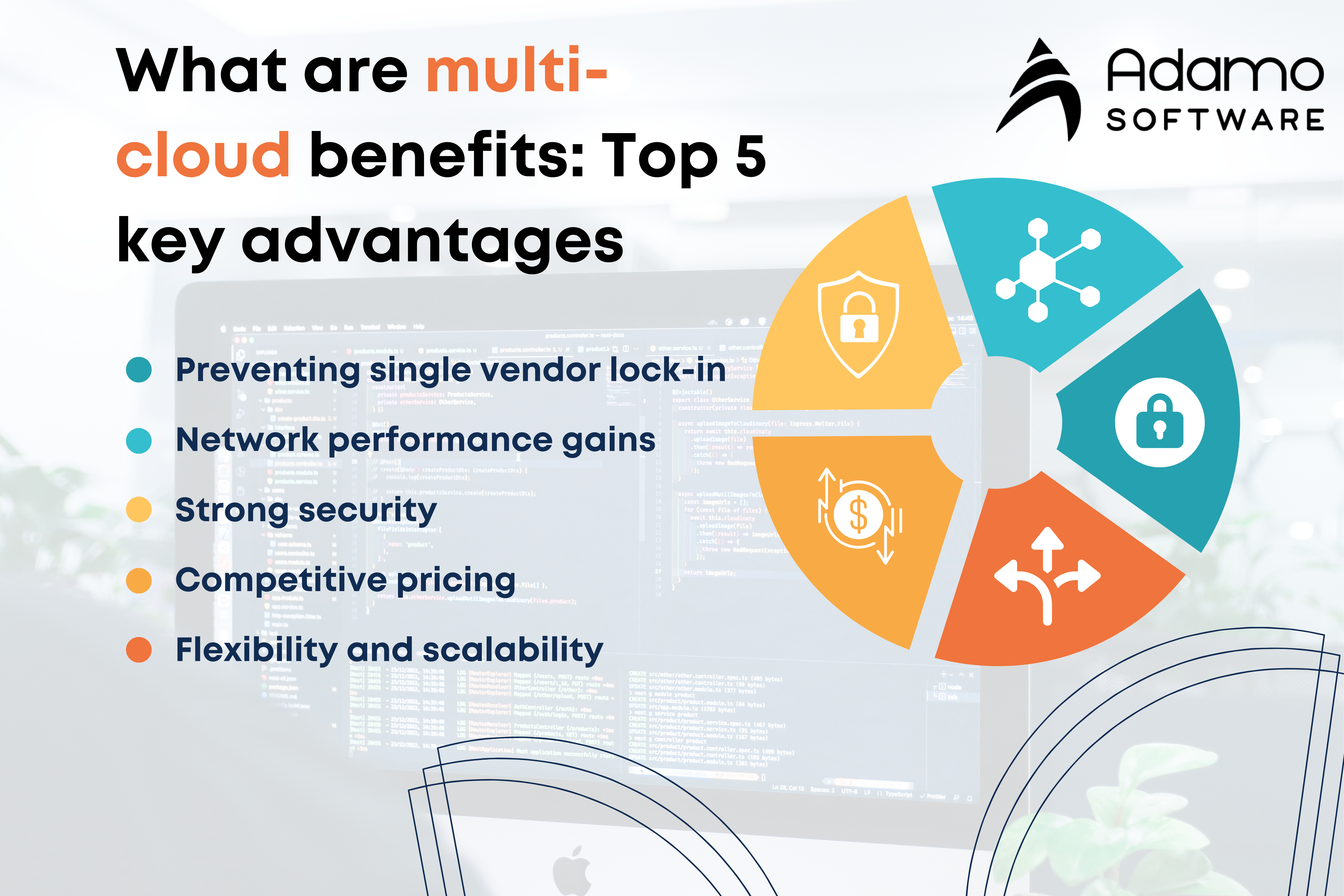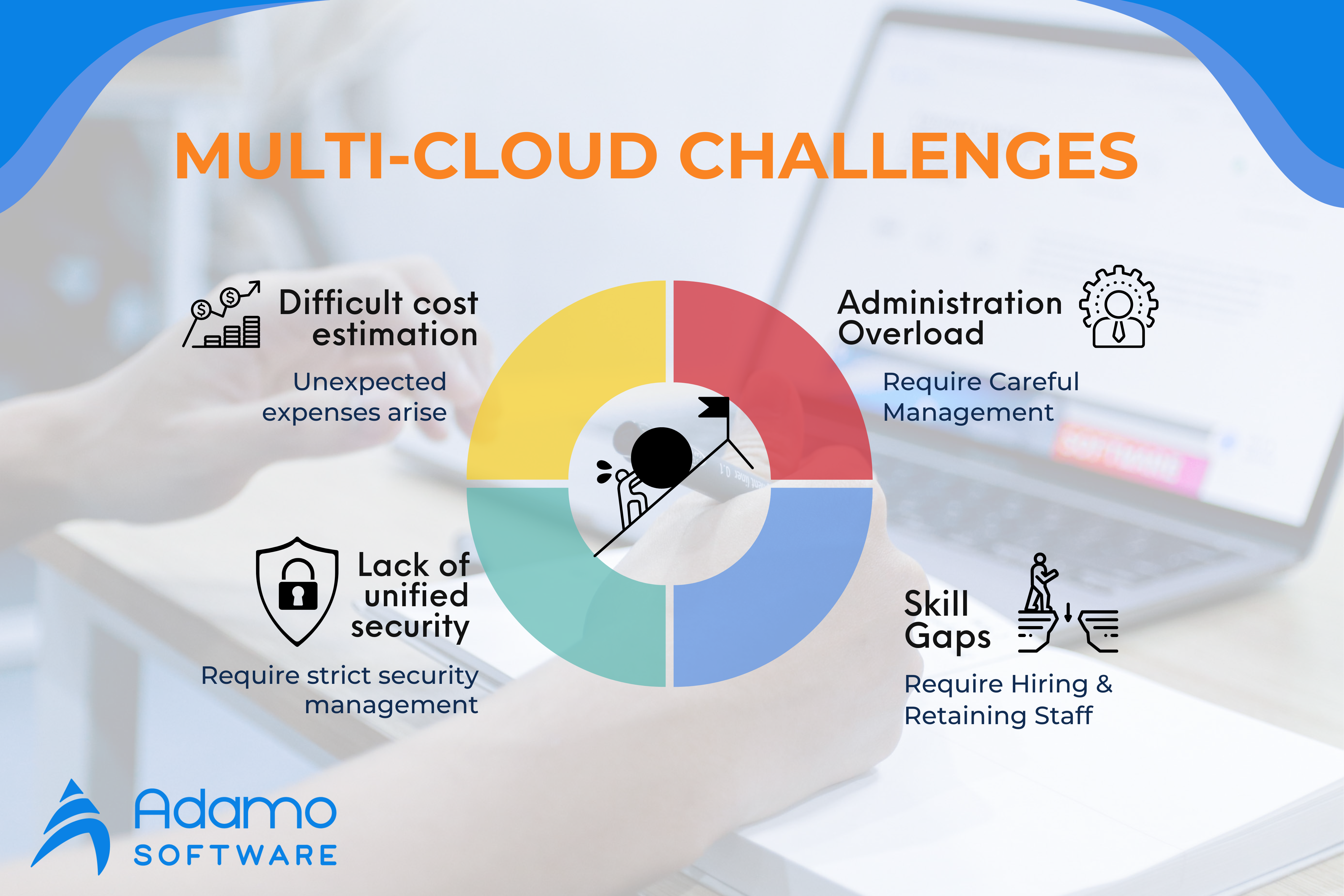Multi-cloud: A innovative adoption technology for businesses
In today's digital market, a competitive edge can be established or maintained thanks to each benefit connected to a multi-cloud strategy.
Once your business reaches the point where it must begin thinking about using cloud computing, getting started is a huge task that takes a lot of time and work. But choosing whether to pursue a multi-cloud strategy will be considerably trickier. And what does having a multi-cloud strategy in place mean?
You'll need to know a lot before making the transfer, whether you're switching from single to multi or want to dive right in. Whether the changes are good or bad, you should be aware of them, which is why we are here to guarantee that you are informed about them. Here, we define it precisely and discuss the benefits of adopting a multi-cloud, and the reasons you might wish to do so.
What is Multi-cloud?
An enterprise that utilizes many cloud platforms (with at least two or more public clouds) that each offer a particular application or service is said to be operating in a multi-cloud environment. To accomplish the mission of the company, a multi-cloud might be made up of public, private, and edge clouds.
In other words, it mixes on-premise operations with services and applications offered by several public cloud providers, allowing businesses to profit from each platform while minimizing its drawbacks.
What are Multi-cloud Benefits?
Preventing single vendor lock-in
If your apps are created for a single cloud vendor, you face the risk of becoming locked into that company. As a result, switching providers in the future will be considerably more difficult. Even while that specific vendor was appropriate for you at the time, it might not be as convenient if you need to scale up or down. Additionally, you might pass up some future discounts that are much better.
Developers can strive to design apps that work across some platforms by choosing a multi-cloud strategy from the beginning. This means that you'll always have the freedom to take advantage of the great deals or features from various providers without compromising what you can provide for your clients!
Network performance gains - Enhance the user experience
Multi-cloud connectivity enables you to build a fast, low-latency infrastructure at a lower cost than integrating clouds into your current IT infrastructure. A multi-cloud method takes the use of quick, low-latency connections to drastically reduce application response time while improving user experience by enabling businesses to expand their networks to different providers.
Only quicker, private links between various cloud service providers will allow for a highly optimized interconnection.
Strong security - Keep your private information safe
You can trust that your private information will be well safeguarded without any action on your part because each cloud provider you use is accountable for its data protection. However, it will be crucial to ensure that your vendors are consistently evaluating the security of your network, particularly as your infrastructure and software evolve.
This underlines the importance of having an in-depth conversation with your IT solutions company on the requirements for information security. Regardless of the service, a dedicated development team needs to be able to safeguard information for clients.
Competitive Pricing - Freedom in choosing a suitable software development company
As the number of multi-cloud providers rises, they compete to offer the best pricing for various resource capabilities while continuing to be appealing to the majority of cloud consumers. With this in mind, businesses may now take advantage of the freedom to compare various suppliers and choose the best deals depending on their unique IT requirements.
Additionally, since you are not constrained by the terms of any one cloud provider, you can choose the most dedicated development team based on the capabilities, including payment flexibility, scalable contracts, customizable capacity, and other crucial aspects.
Flexibility and scalability - flexible storage solutions for businesses
90% of the world's data was produced in the last two years, making multi-cloud the ideal location for processing and storing data with suitable automation and real-time synchronization. Multi-cloud is the ideal storage and scalability solution since it enables organizations to scale their storage up or down in response to changing demand.
Multi-cloud service providers should ideally collaborate seamlessly to enable businesses to invest in any degree of storage, security, and protection depending on the requirements of each data segment.
What are Multi-cloud Challenges?
Difficult Cost Estimation - Unexpected expenses arise
Although having numerous vendors might reduce prices, cost estimation and consolidation become more challenging. You'll need to have a firm understanding of each cloud provider's pricing structure because each service is priced differently by each cloud provider. To efficiently handle all financial aspects, you will also want cross-account reporting dashboards and optimization tools. Additionally, transferring data between clouds may result in extra costs.
Lack of unified security - Require strict security management
You won't be shocked to find that adopting a multi-cloud solution exposes your company to possibly higher IT security threats. A keen eye for detail is necessary to keep your business secure in one cloud. A multi-cloud implementation's growing complexity gives dangerous actors a bigger target to shoot for.
It is crucial to configure and manage security, encryption, and compliance across many contexts. Individual human errors and blunders are weak points that might increase exposure points, especially in the domains of access control and ID verification.
Administration Overload - Require Careful Management
Monitoring systems are more difficult when using multi-clouds. Basic administrative tasks like backing up data, accessing resources, and operating systems become more difficult when your environment is stored across many clouds.
Maintaining a multi-cloud environment can be difficult, particularly if you don't have access to seasoned IT experts that are familiar with various cloud platforms. The interfaces of various systems vary, and managing them might be challenging.
Skill Gaps - Require Hiring & Retaining Staff
IT managers frequently have to retrain staff members to master capabilities across many clouds when businesses adopt a new multi platform tool. It is neither simple nor inexpensive to find and hire the skilled software developers and architects you will require for a multi-cloud implementation. Highly skilled workers are in scarce supply and high demand.
Retraining and retooling current employees is an operational undertaking if you want your company to fully benefit from multi-cloud. A significant Cloud adoption strategy will also call for fundamental management and organizational changes in your company.
Multi-cloud Security: A Secure Multi-cloud Environment
Major cloud providers' security postures are on par with or better than that of enterprise data centers. Therefore security shouldn't be seen as the main barrier to the adoption of multi-cloud services any longer. It is more complicated than simply transferring workloads from on-premises to the cloud.
The programmatic infrastructure of public cloud IaaS should be used by security teams. And they should be aware that security in the world of public clouds is a "shared responsibility." The two components of multi-cloud security are the cloud provider's responsibility for "of the cloud" security and the user's responsibility for "in the cloud" security.
By automating as much of the procedure as possible, human error—which is typically to blame for successful multi-cloud security attacks—is eliminated. The key to success in the multi-cloud security environment is the ability to provision and deprovision digital assets as needed. Programmatic monitoring of security controls is required to provide full cloud compliance.
Multi-cloud Storage: What is the Definition? & How does it work?
Multi-cloud definition
The usage of multi-cloud storage services, whether they are housed in a private cloud, a public cloud, or as stand-alone on-premise resources with cloud-like features, is known as multi-cloud storage. It is a component of a multi-cloud architecture, which mixes resources and services from various public or private clouds.
How does Multi-cloud Storage work?
Multi-cloud controllers are primarily used to manage multi-cloud storage. All of your resources are combined by these controllers under a single namespace and API. You can monitor and manage services from a single dashboard thanks to the centralization of management. Cluster, security, and storage manager agent combinations are frequently used by multi-cloud controllers.
Why do we need Multi-cloud storage?
Improved data security: Because applications and data are spread across many services, a breach affecting one service only impacts a small portion of the data. This makes it simple to isolate assaults and securely keep backup data in distant locations.
Flexibility improvement: By using storage services from different suppliers, businesses can prevent vendor lock-in and boost data durability through duplication. You have more access to specialized, proprietary services when you combine services.
Cost reduction: You can tailor the cost and performance options to meet your needs by using piecemeal storage services. You can benefit from the best costs and fee schedules for each service in multi-cloud setups.
Adamo helps businesses with multi-cloud management
Despite becoming more prevalent, multi-cloud deployments are still relatively new, and tools and best practices for simultaneously managing several public clouds are continuously being developed. Internal IT teams could administer each cloud individually, but this would take too much time and not be desirable. So what is the solution here besides hiring a reputable IT solutions company?
With almost five years of experience in software development and approximately a hundred globally successful projects, Adamo can be a reliable partner for your business. Our dedicated development team has a wealth of experience tackling multi-cloud-related problems.
Several of our services can be included in the communication between the origin cloud infrastructure and the end user. To further reduce latency, we offer multi-cloud load balancing, which divides traffic among many clouds, and CDN caching.
Contact us if you have any questions related to multi-cloud issues or any other software development services.





Comments
Post a Comment